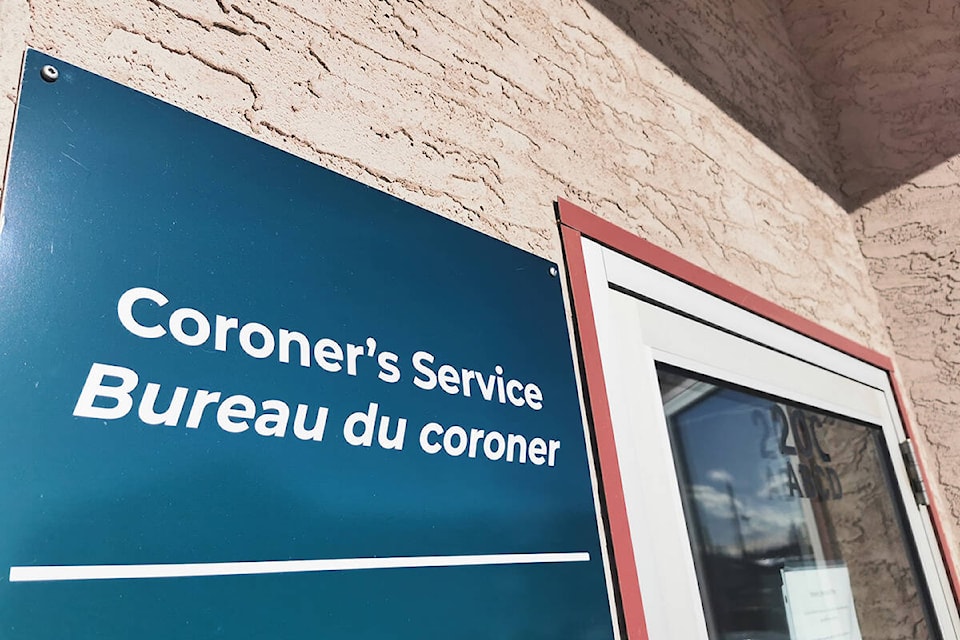The testimony phase of the coroner’s inquest into the deaths of four Indigenous women at the Whitehorse Emergency Shelter in 2022 and 2023 concluded on the afternoon of April 24. On the morning of April 25, the presiding coroner, Michael Eglison, provided the jury with its instructions so that they could begin deliberations.
The inquest, which began on April 8 at a hotel in downtown Whitehorse, is examining the circumstances of the deaths of Cassandra Warville, Myranda Aleisha Dawn Tizya-Charlie, Josephine Elizabeth Hager and Darla Skookum.
Before giving instructions to the jury, Eglison provided “a high-level overview” of the testimony the inquest heard. He noted the diverse range of witnesses who testified, including paramedics, shelter staff and experts from various fields.
Following Eglison’s overview, an audio recording of testimony from Dr. Elizabeth McKinnon, a forensic pathologist from the BC Coroners Service, was replayed for the jury.
McKinnon performed autopsies on Hager and Skookum and reviewed reports and documents related to the deaths of Warville and Tizya-Charlie. Her testimony, given on April 16, gave insight into the causes of death of the four deceased women.
Like many other days during the inquest, some in the audience openly wept during this portion of the proceedings.
Following the overview of the inquest and the replay of McKinnon’s testimony, the presiding coroner informed jurors of their job ahead.
He said that jurors are tasked with determining the identity of the deceased individuals, the time and place of their deaths, and the causes of death. Jurors are also asked to classify the deaths — natural, accidental, suicide, homicide or undetermined manners of death — and Eglison provided definitions for each classification.
“In your deliberations, in determining classification of death, you need to go through and be satisfied that the classification that you come up with actually meets the definition,” Eglison told the six-person jury.
Eglison also said jurors could provide recommendations to prevent similar fatalities if they see fit.
He told jurors that he would provide them with a USB drive containing a list of possible recommendations, although they are not required to accept his recommendations. He additionally noted that the jurors are not required to advance their own recommendations unless they deem it appropriate.
“Give careful consideration to ensure that any recommendations you make are reasonable, achievable and practical. A few meaningful recommendations focused on addressing broader failures of systems and standards can be much more effective than many recommendations, addressing unique circumstances,” Eglison said.
He added, “If you believe a recommendation is warranted, I suggest that you consider the goal to be achieved and recommend that the agency developer plan to achieve it.”
Eglison finally noted that coroner’s inquests are not intended to assign blame or guilt and that jurors cannot make findings of legal responsibility “nor express any conclusions of law.”
Inquests held by the Yukon Coroner’s Service are intended to serve three key functions: determine the facts related to a death (or deaths), make recommendations — if appropriate and supported by evidence — to prevent future deaths in similar circumstances and assure the community that the death (or deaths) is not being overlooked or ignored.
Although inquests into more than one death are rare, the chief coroner can call a single inquest into more than one death if the facts and circumstances of the deaths are “sufficiently similar” to the extent that a “common inquest is the most efficient and effective way of inquiring into the deaths,” according to the Yukon’s Coroners Act.
“It is rare to investigate more than one or two deaths or certainly a single incident at one time. To my knowledge, this may be the first time that we have called an inquest into more than one death that do not occur at the same time,” Heather Jones, the Yukon’s chief coroner, told the News via email at the start of the current inquest.
It’s unknown how long the jury will take to deliberate the circumstances of the four deaths currently being examined by the coroner’s inquest. However, one person with knowledge of the proceedings admitted to the News that it could take several days.
Contact Matthew Bossons at matthew.bossons@yukon-news.com
